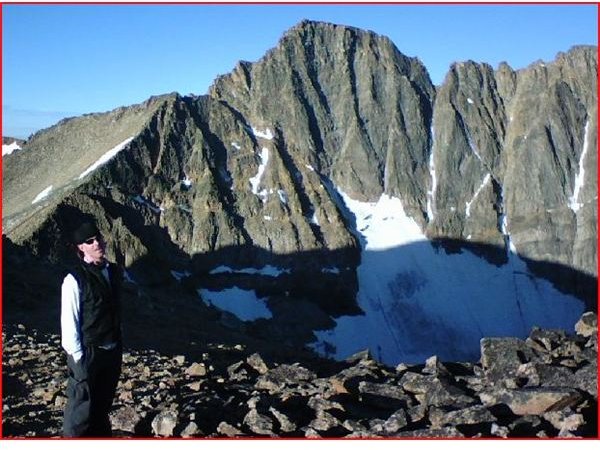Climbing a Mountain Takes the Preparation and Conditioning Detailed Here
Begin by Training your Mind
Preparing yourself for climbing a mountain perhaps begins first with psyching yourself up for the challenge. It’s going to take determination, tenacity, and in some cases, fearlessness to leave sea level far behind. The climber will be a long way from civilization and each step gets you further away from safety. Mastering the mind, so that is fully aligned with assisting you in achieving your lofty goals while keeping you fully present in the moment, should be a priority.
Each step on a climb up a mountain involves the potential to twist an ankle if you’re not careful because often times, the trail is uneven and loose rocks are prevalent. But this shouldn’t deter you because it’s actually one of the most rewarding aspects of this outdoor sport. It keeps you fully present for the now of each moment, which is a fundamental key to a sound spiritual condition. Otherwise, the discordant ‘monkey-mind’ prevails with its incessant squawking about fears and concerns associated with worrying about the past or future. By blocking all that out to remain fully present for each step of the way, you stay safe, healthy, and enjoy the journey.
A healthy mind-set that helps out with all athletic endeavors is proffered in an article called Exercise and Stress control: Relaxed Intensity. Learn how to maintain a zen-like attitude and a loose, but strong physical posture, that adapts to changes like a shock-absorber keeping you present and at your full potential. You might be familiar with what is popularly known as the “zone”, which is used to describe professional athletes when they are completely immersed in what they are doing so that every facet of their being is in synch. Key factors and challenges inherent in mountaineering are altitude and terrain. You must learn to acclimate to both. All of that begins with the mind. Higher altitudes will reduce brain functions and negatively impact basic motor skills. Terrain must be approached with respect and skill so that you don’t get hurt.
Then Train your Body
So if you have to travel far to get to the mountains how do you train? Even if you do live near the mountains, you won’t necessarily always have time to get to a trail. That is why there are some specific exercises and routines designed for alpine adventures. Your legs are obviously doing the majority of the work, so that is the key area of focus. Your quads, glutes, calves, and hip flexors need strengthening to endure long hours of walking and scrambling.
Specifically, lunges, and squats will greatly benefit you alpine endeavors. Hip flexors are a key area of focus and for that, large repetitions (work up to 3 sets of 100 each) of scissor kicks, flutter kicks, and mountain climbers (go figure) will work well for you. If you’re unfamiliar with how any of those are done a site like YouTube can show you how.
Your ankles are also extremely important so you want them flexible and strong especially if you’ve ever had an ankle injury. The Best Exercises to Strengthen Ankles will show you exactly how to prevent injuries on these all-important weight-bearing joints. Stairmasters and elliptical machines are the cardio equipment you’ll want to use for endurance training. Plus you’ll need to get used to wearing a pack either out hiking on the trail or when using machines. Having a strong core and upper body is also important, so include routines for that which you can easily find on our site. Gradually add more weight to your pack and all those squats you do will pay off. This brings me to a very important point.
The great thing about mountain climbing is now you have a goal to give more of a purpose to all those mundane, everyday workouts. You’re getting in shape for the goal of reaching a summit. All that hard work and sweat will be rewarded when you’re up in the clean, crisp mountain air taking it all in. Believe me, there is nothing like the feeling you get when you’ve accomplished your mission standing on top of a summit with immense horizons of beauty in all directions. It’s ultimately all done by your own volition not to conquer, but to be at one and in peace with astounding scenery.
Another recommended manner to boost your conditioning is to Improve your Workouts with HIIT Training (HIIT). HIIT workouts really exhaust your muscles with routines involving things like all out sprinting with brief rest periods in between. These workouts can take dramatically less time than normal workout routines, but since you are going full bore, you will not soon forget ( or recover) the time you spent doing it. All right, now that you know what mountain climbing is all about and how to prepare, you’ll have to learn about gear for the technical climbing aspects you will encounter when you advance from the walk-ups we defined in article two. The final articles in this series acquaint you with tools and gear that are essential for advanced mountaineering.
Sources:
Traditional Mountaineering https://www.traditionalmountaineering.org/Reviews.htm
Graydon, Don. Mountaineering: The Freedom of the Hills (7th Edition). Seattle: Mountaineers Books, 2003.
MountainZone.com https://climb.mountainzone.com/
